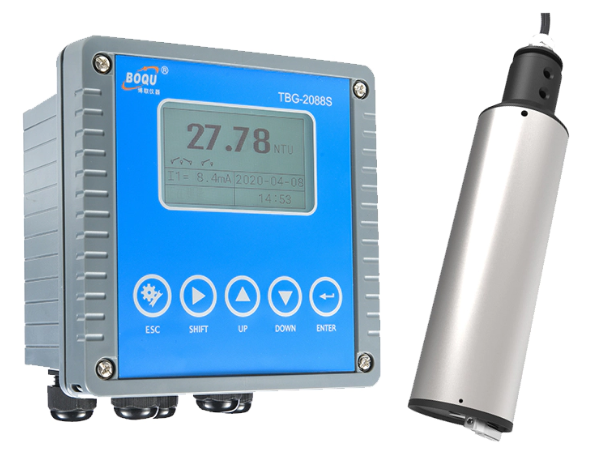Contact us right away
If you run into any issue or have any question.
 E-mail: michael@shboqu.com | Expert in Water Quality Measurement and Water Treatment Project
E-mail: michael@shboqu.com | Expert in Water Quality Measurement and Water Treatment Project
Water's hydrological, chemical, and biological properties may be measured using water quality sensors. These parameters include pH, dissolved oxygen, temperature, nitrate, ammonia, conductivity, turbidity, and salinity. Depending on the application, these sensors may monitor and enhance water quality in various environments.
By keeping tabs on changes in the water source's quality over time, a water quality monitoring system may provide vital data to scientists, operators, and engineers for applications such as hydraulic model calibration, quality control, and laboratory research.
Water quality sensors may operate as a watchdog to maintain potable water in distribution systems by providing operators with useful information in real time. A public health emergency may be averted with water quality assessments by alerting relevant organizations, such as the Centers for Disease Control. Making decisions on achieving regulatory water quality criteria, recognizing non-regulatory water quality for critical users, validating water quality modeling, and using a contamination warning system are just a few of the many management concerns that typically include water quality sensor data.
Water resources' chemical, biological, and physical characteristics indicate their quality. People who depend on the water supply may feel the effects of even little parameter changes like pH readings. To keep water of high quality, it is necessary to monitor its conductivity, dissolved oxygen, pH, salinity, temperature, and turbidity. Water quality monitors are now used in many systems for the same reason.

Water quality sensors have many uses, including:
Water quality sensors may monitor and manage water conditions on aquaculture farms, where aquatic creatures like fish, shellfish, and algae are grown. Water quality sensors may aid aquaculture species in reaching their full potential by monitoring factors including dissolved oxygen, pH level, salinity levels, and ammonia.
Water ensors may control and dispose of effluents in the chemical sector. Water quality sensors measure factors including electrical conductivity, pH levels, turbidity, and nitrates to ensure that chemical process water is up to code and that effluent is safe to release into the environment.
Natural water sources, including rivers, lakes, and seas, may have their quality tracked using water quality monitors. Water quality sensors measure pH, temperatures, oxygen consumption, and turbidity to detect human or changes in the environment. You can use water quality monitors to know where aquatic life is at risk from ocean acidification or hypoxic zones.
Crop irrigation water can be better managed using water quality monitors. Water sensors measure salinity levels, pH, and nitrate, among other factors, to assess the potential for salt buildup and nutrient leaching, which threaten soil health and agricultural yields.
Researchers in the marine field have found that water sensors are useful tools for studying ocean circulation, biogeochemical processes, reef and coral health, and biodiversity. Environmental changes may be better understood with the use of water quality sensors.
The use of water sensors allows for the verification that potable water satisfies certain safety requirements and that wastewater is adequately treated before discharge or reuse. Water sensors may identify toxins or pathogens by detecting factors including turbidity, pH, free chlorine, and bisphenol A.
When precise and trustworthy information about water conditions is needed, water sensors find several uses in various fields and environments. These sensors can potentially safeguard and enhance water quality for multiple applications.

As a whole, the mechanism of how these sensors function consists of numerous processes. Therefore, the specifics of what happens at each stage are as follows:
Deploying, putting, and installing begin this process. Accurate water quality measurements depend on sensor location. Ensure the sensor probe, or detecting element, contacts the water sample. The sensor must contact water from a river, tap, or lake. This method allows the sensor to measure various features from the source accurately.
Once the installation and deployment are complete, the sensor may begin to detect the water quality. Remember that certain aspects of water quality all sensors cannot detect. Metrics and characteristics are measured using various sensors. To explain:
● A sensor detects the quantity of scattered light after light is released into the water to determine the water's turbidity.
● The current assessment after oxygen reduction is used to quantify dissolved oxygen in an electrochemical process.
In this manner, each sensor can accurately detect the water quality as intended.
Raw signal data from the sensor is useless. Transforming raw data signals follows quality detection. Most sensors' analog signals are digitized using our approach. Processing, display, and data storage efficiency is far higher than analog signals. Analog-to-digital converters (ADCs) convert signals.
The conversion step is followed by signal processing. This step removes background noise from data. This enhances the overall signal quality according to set requirements. Sensor qualities vary; hence signal processing may vary.
Sensors conduct onboard signal processing in certain devices. Other systems use external devices similarly.
Water quality testing ends with data display and interpretation after signal processing. Only meaningful data is left to make a graph. The water's oxygen, pH, and turbidity levels are shown attractively here. Some water sensors have built-in displays, while others need to be connected to a screen.
To get your hands on water sensors, BOQU water quality sensors supplier is at your service. Let us know what you need, and we’ll handle it. Contact us for more details.
Copyright © 2019 Shanghai BOQU Instrument Co.,Ltd | All Rights Reserved
Hello, please leave your name and email here before chat online so that we won't miss your message and contact you smoothly.